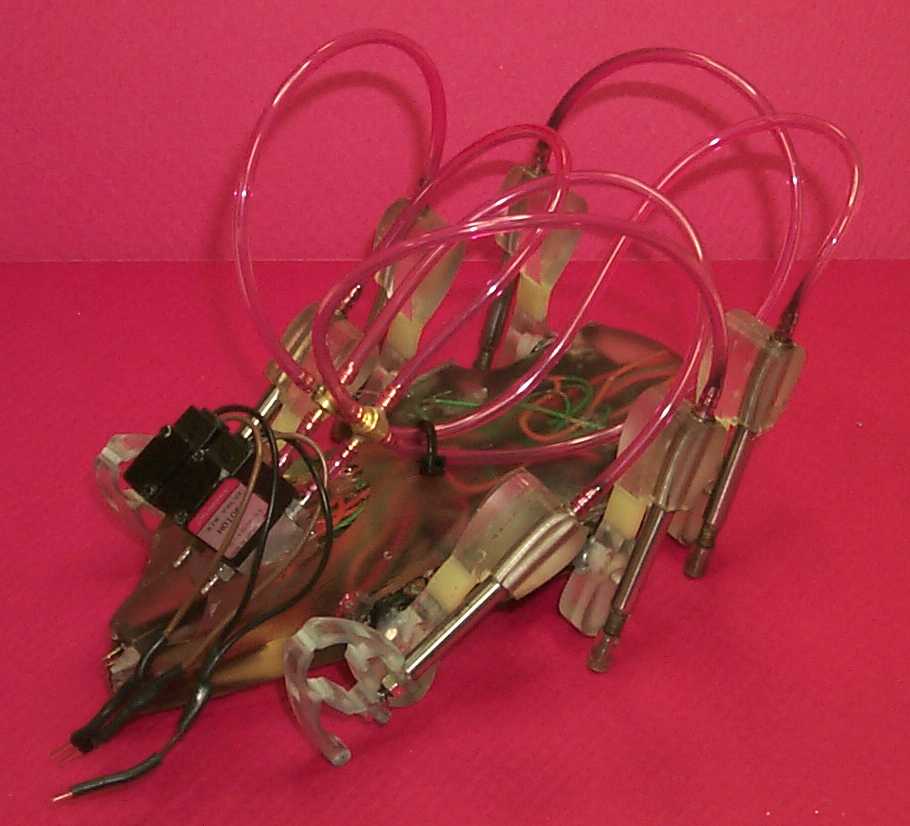Sprawlex
Sprawl Version 4 (Sprawlita
with leg extensions)
Motohide Hatanaka 02/26/2001
 |
 |
| Angled back view |
Close-up of the hind leg with extension |
Purpose
Sprawlex is a variation of the Sprawlita
hexapod with an SDM-manufactured linkage to increase the stroke length
of the rear legs. The motivation for Sprawlex is found in our ISER
2000 paper, in which we observed that Sprawlita has a short phase in
which the rear legs appear to drag on the ground because they run out of
stroke length. Our hypothesis was that by increasing the stroke length
of the hind legs, we would achieve the following objectives:
-
achieve a running motion that more closely
matches the inverted spring/pendulum dynamics seen in most running animals
-
better match the ground speed of the rear
feet at contact (to reduce slippage)
-
make the robot run faster.
Design
Leg
extensions are attached to the hind legs of Sprawlita. The extensions
are compliant pantograph linkages that extend the stroke from 20mm to 32mm.*
Like the original Sprawlita legs, they are fabricated using the Shape
Deposition Manufacturing method. A series of experiments were conducted
with variations on the linkage geometry and flexure material. Best performance
and fatigue life were obtained using a combination of hard polyurethane
links with fiber reinforced soft polyurethane living hinges. Details are
provided on the leg
extensions page.
Observations
The hypothesis that motivated the leg extensions
is currently being tested. Preliminary results indicate that objective
#2 has been achieved. However, objectives #1 and #3 will require modification
of the front and middle legs of the robot. The leg extensions also have
the effect of increasing the compliance in the rear legs and of decreasing
the thrust force for a given piston diameter. As a result, the robot is
now being propelled mainly by the middle pair of legs. To overcome these
effects the front and middle legs should be made more compliant.
Ongoing and future work(as
of Feb 26, 2001)
We are testing variations on the design that
use either larger bore pneumatic cylinders or two cylinders per leg. These
cylinders require more air than the original cylinders and we will therefore
have to modify the valving as well. We are also exploring more rigid hind-leg
hip joints and more compliant fore and middle-leg hip joints.
*(The
stroke of the pneumatic piston is restricted to 16mm from 20mm but then
it is mechanically doubled to provide 32mm of effective stroke.)
Comments and questions to: Motohide
Hatanaka



